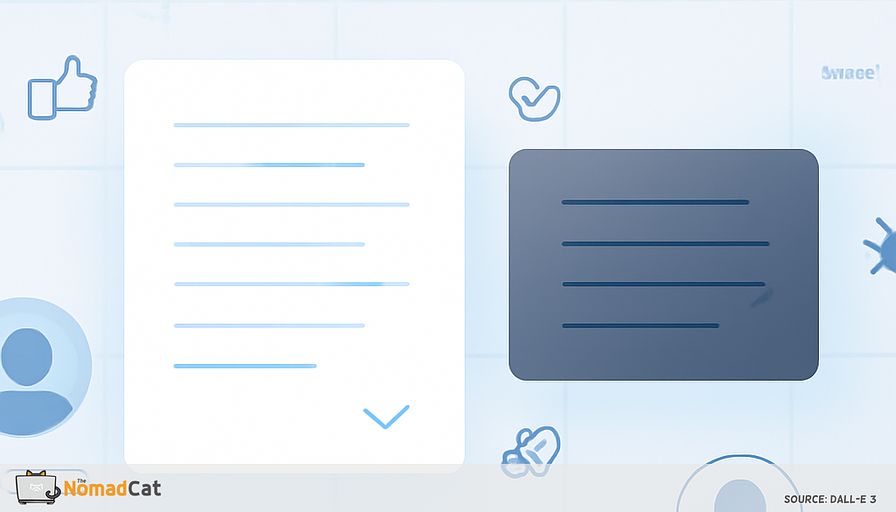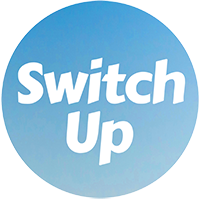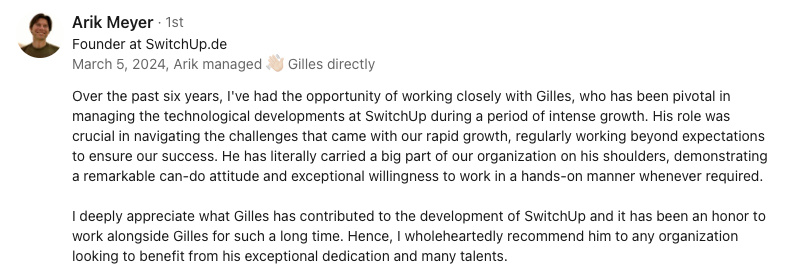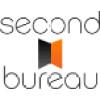Abstract:
The article explores how digital body language—subtle cues like formatting, response time, emoji use, and profile photos—shapes communication and trust in tech-focused, text-heavy environments. It emphasizes a minimalist approach, where intentional use of whitespace, concise templates, and consistent visual branding (such as neutral profile images and simple email signatures) conveys professionalism and clarity without clutter. Unique examples, like using custom team emojis (e.g., a rocket for launches) or starring a GitHub repo to show support, illustrate how silent signals can foster warmth and recognition among remote teams. The piece highlights the value of intentional silence to set boundaries and recommends aligning platform choices (email for formal matters, Slack for quick chats) with communication goals. It also stresses the importance of cultural awareness and provides actionable frameworks—like standardized emoji sets and signature moves—to streamline communication and reinforce personal digital brands. Overall, the article offers practical strategies for tech minimalists to communicate clearly, uphold healthy boundaries, and build trust, all while letting their professional digital style stand out with less noise.
Ever get the feeling your messages mean one thing, but people read them another way? I’ve been there—especially when managing a multicultural team in Beijing, where a single emoji or a delayed reply could mean something totally different depending on who was reading. In tech, where most of our conversations are digital, so much can get lost unless you know how to use digital body language. Here, I’ll share how choices like formatting, response time, emoji use, and even your profile photo quietly set the tone for every conversation—whether you’re pitching a podcast, reaching out for a guest post, or just trying to keep your sanity in a remote team.
You’ll see how a tidy message format or a single emoji can show warmth, clarify intent, and build trust—without extra noise. I’ll talk about subtle signals that shape team culture, minimalist branding for quick recognition, and the use of intentional silence for healthy boundaries. There are practical tips on matching platforms with your message, using whitespace for clarity, and picking signature moves that make your digital presence professional and human. Sometimes, I find that less is more, especially when working with teams in different countries.
From quick emoji guides to tips on cultural awareness, the goal is to make every word and pause count. If you want to communicate clearly, protect your time, and let your digital style shine with less clutter, maybe this help to keep things simple, no?
Digital body language for tech minimalists
What it means online
Picture this: it’s 11pm in Beijing, and a Slack message pops up—just one line, no emoji, no hello. I remember wondering, is this urgent? Are they upset? Digital body language is all these subtle nonverbal clues—reply speed, message format, even a simple emoji—that fill in for tone of voice or face-to-face cues. When I was leading an IT services company in Beijing, managing across time zones and cultures, I learned quickly that a fast reply could be seen as efficient in Berlin, but abrupt in Lisbon. These little hints shape how messages come across and help bridge the gaps.
In everyday tools like email, Slack, or project boards, every detail sends a signal, sometimes louder than the words themselves. For example:
- Quick reply can seem efficient or, if used too often, maybe a little abrupt
- Long, detailed notes may feel thorough or leave readers overwhelmed
- Whitespace and line breaks show clarity and openness, while chunky text can appear rushed
Minimalism in digital body language means using these cues on purpose, not by default. Choices about structure, timing, and length can help set a tone of openness or mark clear boundaries.
Minimalist digital cues use just enough formatting—bullets, bold, line breaks—to keep things clear without clutter. For example, a simple bulleted project update is far easier to understand than a dense paragraph. This careful restraint helps avoid confusion and lets your meaning come through.
Do / Don't: Slack Message ExampleDon’t:
Hi team, just a reminder that the product launch is at 2pm tomorrow please check the checklist and confirm your tasks by EOD thanks.
Do:
Hi team,
- Product launch: 2pm tomorrow
- Please check the checklist
- Confirm your tasks by EOD
Thanks!
Silent signals for trust
A simple emoji, like 👍 or 👀, quietly shows you’ve seen a message or agree—no need for more replies or extra notifications. When I was CTO in Berlin, I found that just updating my Slack status to “In Focus Mode” or sending a 👀 after reviewing a pull request helped my team know I was present, but not interruptible. These gestures keep things friendly and help the team flow (and sometimes save everyone from another “thank you” ping). It’s a tiny thing, but helps communication feel a bit warmer.
Other silent signals—like starring a GitHub repo or bookmarking a project update—show real support. For example, starring a repo after a demo can tell the maintainer, “Nice work, I’m keeping an eye on this!”—without saying a word. These soft actions help colleagues feel noticed, even in remote or busy teams.
Updating your status or sharing your calendar link is another quiet way to show availability or set boundaries. Marking your status as “In Focus Mode” signals you’re heads down, cutting down on unnecessary pings. These habits manage expectations and support teamwork across schedules. A clean profile image or simple email signature can also make your presence clear and consistent.
Minimalist visual branding
Profile images & signatures
Minimalism online isn’t only what you say—it’s also how you show up in emails and chats. When I first moved from Berlin to Lisbon, I realized my old profile photo (busy background, bright colors) didn’t fit the more relaxed, minimalist vibe of my new network. So I switched to a simple, distraction-free photo—neutral background, basic clothes, no filters. Suddenly, people started recognizing me faster across Slack and LinkedIn. Consistency builds trust. People tend to trust and remember a profile that stays uncluttered—whereas a noisy or mismatched image might leave a mixed impression.
Do / Don't: Email Signature ExampleDon’t:
Jean Dupont
Chief Technology Officer
IT Services International
+49 123 456 789
[email protected]
[LinkedIn] [Twitter] [Instagram]
“Empowering digital transformation across the globe!”
CONFIDENTIALITY NOTICE: This email and any attachments...
Do:
Jean Dupont
CTO | IT Services International
[LinkedIn]
The same goes for email signatures. A minimalist signature—just your name, job, maybe a single link or logo—keeps attention focused on your message, not a stack of icons or long disclaimers. Usually, a short, neat signature feels more professional and is easier to read (your recipients’ eyes may thank you).
Bringing these details together is all about consistency. Using the same neutral profile image on Slack and LinkedIn, plus a unified signature, gives your digital brand a clear shape.
Custom emojis & visual cues
Custom emojis can become team traditions if used well. Maybe a team uses a custom rocket emoji to mark every product launch, or a unique checkmark when a task is done. These details add fun and recognition without making chats busy.
Keeping your emoji set small is key. Imagine just these common icons:
- ✅ for “done”
- 🚀 for “launch”
- 👀 for “reviewing”
- 👍 for “acknowledged”
Keeping it simple helps everyone recognize notes quickly and reduces confusion. And, as above, sometimes holding back on unnecessary replies can say even more—a minimalist move that speaks volumes.
Silence for boundaries
Silence as a boundary
Minimalist replies aren’t all about being brief; they're about setting respect and healthy expectations. When I left a big company to work independently, I worried about missing out on important messages if I didn’t reply instantly. But after a few months, I realized that delayed or brief replies actually reinforced my professionalism and time respect. For example, if a teammate gets a Slack message after 6pm and doesn’t reply until morning, that silence shows they value work boundaries. That’s especially helpful for async workers with different schedules. These habits support cultures where boundaries are clear, not assumed.
Short replies, like a simple noted or 👍, keep things efficient and acknowledge messages without demanding extra attention. This helps everyone stay on the same page and avoids inbox overload.
But, for silence to work as intended, clear ground rules help. Everyone should know that a short reply or a delay doesn’t mean disinterest. Sharing working hours or your preferred style lets teammates know what to expect. Then, digital silence is just another way of showing respect.
Silent engagement
Silent signals can show you're open for collaboration or just available. Starring a project or updating your status to “available” lets people know you’re engaged, no extra pings needed. Marking “Open for feedback” or sharing a calendar link gives colleagues info without endless back-and-forth.
Choosing the right channel matters too. Posting updates in a shared thread, instead of always messaging directly, communicates your style and boundaries without added noise.
Platform choices as brand signals
Platform sets the tone
The platform you use says a lot about your style. Email usually comes off as formal—for big topics or important info. It’s structured and shows respect for people’s time. By contrast, Slack or Teams are relaxed and good for quick chats. Imagine someone sending a contract over Slack versus over email—the choice alone changes the mood.
Many companies pick certain platforms for certain tasks to keep things simple and avoid confusion. Project updates might always go in Slack channels, so everyone knows where to look and who to ask. It supports a clean workflow—fewer tools, fewer distractions, and a better focus on what matters.
Async features like threads or scheduled messages keep conversations tidy and help avoid interruption. Threads for ongoing topics or scheduled messages for work hours let everyone focus better. These choices, big or small, all reinforce a clear, respectful digital brand.
Channels & boundaries
Assigning each channel a purpose keeps boundaries and expectations clear. Maybe email is just for contracts and big decisions, while Slack covers daily check-ins or fast questions. That way, nobody misses out on what matters, and each channel stays focused.
Letting teammates know your preferences helps too. You might say you check email twice a day, or that feedback goes in a special Slack thread. Adding this line to your signature or onboarding docs is enough. These habits cut frustration and make your communication style clear and purposeful.
Cold Outreach TemplateWhen pitching for a podcast or guest writing, I use a simple template like this:
Hi [Name],
I came across your work on [Platform/Project] and thought our experience with [specific skill/project] at [your company] could be relevant for [their need]. Would you be open to a quick chat next week?
Best,
[Your Name]
This help to keep things simple, no? It’s direct, respectful, and easy to adapt for any context.
Minimalist formatting & signature moves
Whitespace & concise messaging
Heavy blocks of text can be overwhelming. Adding whitespace and bullet points makes things easier to scan. This habit supports readability and can lead to quicker replies and less confusion.
Concise templates make repeated outreach easier. Emails under 200 words are more likely to get replies. A simple flow might look like:
- Greeting
- One-sentence purpose
- Key points in bullets
- Short closing line
Minimal formatting not only makes your message easy to read, it shows respect for others' time. Using a quick template—like, Hi [Name], here’s the update: [bullets]. Let me know if you have questions. Best, [Your Name]—lets people get the info and move on.
This approach signals professionalism and clarity. Consistent use of whitespace and short, clear formatting leads to fewer follow-up questions and smoother information flow. Signature moves and a steady style help make your messages stand out as thoughtful and efficient.
Signature moves & personal branding
A one-line sign-off like “Best, [Name]” or Engineering @ [Company] can be your subtle trademark. Some people are known for always keeping it short or using a signature phrase the team begins to expect. Common choices are:
- “Best, [Name]”
- “Thanks, [Name]”
- “Stay curious, [Name]”
Signature habits—like short emails or a recognizable sign-off—build trust and make your name pop out in a busy inbox. These little touches, repeated over time, become part of your digital brand.
Consistency here quietly says you’re reliable and thoughtful, and helps you stand out without effort.
Consistency & authenticity
Aligning signals
Mixed signals—like tossing a playful emoji in with strict news—can muddy things fast. For example, using confetti with a note on tight deadlines might leave people scratching their heads. Consistency across your images, writing, and emoji helps build trust. When all your signals line up with your tone, people find it easier to follow your intent.
Brand or style guides can help keep things tidy, like outlining which emojis are OK for updates and which work for formal news, or laying out how signatures should look. Following these standards keeps your presence cohesive, even as things change or teams grow.
It also helps to occasionally review your practices—maybe every few months—to check if profile images and message habits still fit with your guidelines. This nips little problems before they grow. That way, your signals stay fresh and keep reflecting your brand as it changes.
Cultural & contextual awareness
Culture has a big effect on how digital signals are read. Fast replies might mean speed and respect in one country, but seem abrupt somewhere else. An emoji that's fine in one culture might confuse in another. Being aware of these differences helps you avoid being misunderstood.
Different generations or industries have their own ways too. Younger workers may see emoji as friendly, while others think it’s too casual. In some places Slack is normal, while others stick to email. Adjusting your habits—emoji, response speed, channel use—based on your group prevents confusion and helps you connect better. Reference guides or team notes can help when switching context or audience.
I learned this the hard way when I first started working with teams in Beijing. My habit of sending quick, bullet-pointed updates (a trick I picked up from my background in fundamental physics—always keep it precise!) sometimes came across as cold. It took a few awkward moments before I realized a simple “hello” or a friendly emoji went a long way.
Actionable frameworks
Quick-reference for silent signals
Standardizing digital signals makes communication smoother. Using a small set of emojis—like:
- 👍 for acknowledgment
- ✅ for task done
- 👀 for reviewing
—helps everyone know what’s happening without extra words.
Your status can also manage boundaries. DND, Available, or OOO show when you’re reachable, so there’s less chasing or waiting.
Bookmarking or starring content is a silent way to show interest or approval, like starring a project doc instead of sending one more reply. It works well, keeps chats clean, and still supports your teammates.
Simple templates make these habits easy—sometimes starring a file is all you need to let others know you noticed their work.
Fill-in-the-blank templates
A short, clear sign-off strengthens your brand with every message. Go-to templates include:
- Best, [Name]
- Thanks, [Name]
- [Role] @ [Company]
Keeping a shortlist of minimalist emojis makes you more consistent across tools. Using the same few everywhere makes your style recognizable—like 👍 for acknowledgment, ✅ for completion, 👀 for review, and 🙌 for gratitude or wins.
With these habits and templates, minimalist digital body language can fit easily into your daily work—communicating clearly, setting limits, and earning trust without noise.
Digital body language is more than just text and icons; it's the quiet driver behind every message you send. Clean formatting, smart pauses, and simple visual cues help clarify your meaning, protect your time, and build team trust. Minimalist styles keep things easy, letting your intent shine through. Small tweaks—like a neat profile photo or regular sign-off—help you leave a professional impression. When teams agree on silent signals and platforms, working together just gets easier. The perks aren’t only about output; they support a more respectful, healthy digital culture. And if you’re like me—balancing the excitement of new work models with the anxiety of missing out—these small habits can make all the difference.














